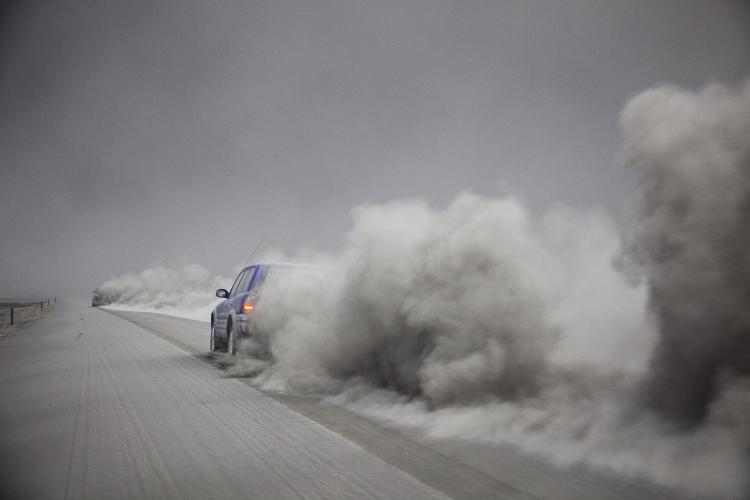Iceland’s Eyjafjallajökull volcano, already in the news for its recent series of eruptions and disruption of air traffic in the Northern European sector, is now responsible for a substantial ash cloud that is traveling through Europe and affecting a large number of countries including Denmark, Germany, the United Kingdom, and Sweden.
Scientists have predicted that the ash cloud resulting from the Eyjafjallajökull volcano eruption would eventually make its way to the U.K.
The ash cloud is currently traveling through Europe at an estimated 9,000 meters per hour, CNN News reported on Saturday.
The cloud is currently covering most of Northern Europe, covering vast parts of the United Kingdom, Sweden, Norway, Germany, Denmark and the Netherlands. The London Ash Advisory Center reported that the cloud would move north east slowly over the next day and a half before reaching part of Russia.
“We expect the speed of the winds to decrease over Iceland and the North Sea ... which could limit the distance the plume will travel, as well as limit the concentration of the ash if and when it reaches mainland Europe,” CNN meteorologist Brandon Miller said.
Those near the volcano have reported that ash is coming out in pulses rather than in a steady flow. European airports have lifted the majority of their airstrip restrictions but some delays are still in effect. Travelers to Europe have been advised to check with their airlines for updates before traveling to any of the airports.
The Eyjafjallajökull volcano last erupted in 1821, resulting in lava flowing through the earth’s crust for close to two years. Iceland’s locals are hoping that the pulsing ash clouds are a sign that the volcano is done rather than gearing up for another year and a half of activity.
Scientists have predicted that the ash cloud resulting from the Eyjafjallajökull volcano eruption would eventually make its way to the U.K.
The ash cloud is currently traveling through Europe at an estimated 9,000 meters per hour, CNN News reported on Saturday.
The cloud is currently covering most of Northern Europe, covering vast parts of the United Kingdom, Sweden, Norway, Germany, Denmark and the Netherlands. The London Ash Advisory Center reported that the cloud would move north east slowly over the next day and a half before reaching part of Russia.
“We expect the speed of the winds to decrease over Iceland and the North Sea ... which could limit the distance the plume will travel, as well as limit the concentration of the ash if and when it reaches mainland Europe,” CNN meteorologist Brandon Miller said.
Those near the volcano have reported that ash is coming out in pulses rather than in a steady flow. European airports have lifted the majority of their airstrip restrictions but some delays are still in effect. Travelers to Europe have been advised to check with their airlines for updates before traveling to any of the airports.
The Eyjafjallajökull volcano last erupted in 1821, resulting in lava flowing through the earth’s crust for close to two years. Iceland’s locals are hoping that the pulsing ash clouds are a sign that the volcano is done rather than gearing up for another year and a half of activity.






